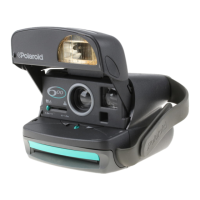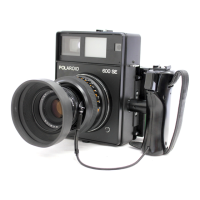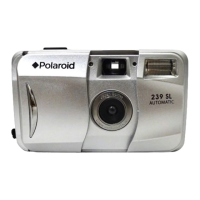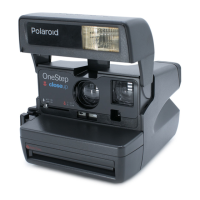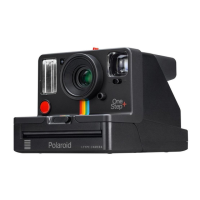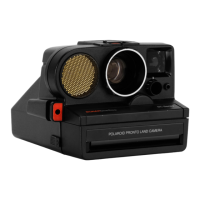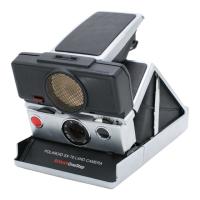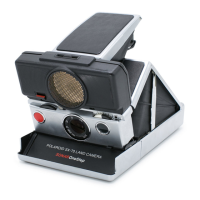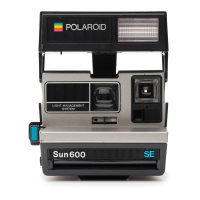1 - 4
Unique Joshua Differences
Three major, unique design goals have been successfully achieved in the Joshua Camera:
• Storage of finished pictures within the Camera
• Compact size with extremely rugged construction
• Improved exposure control and picture sharpness under virtually all lighting conditions
Each of these Joshua differences will now be briefly described.
In-Camera Picture Storage
Each film frame after exposure is picked and driven by feed rollers into a semi-circular chute chamber . . .
makes a U-turn . . . is fed into the processing rollers (spread system) . . . and picked a second time into a
storage chamber (Figure 1-2). The process is repeated for all subsequent exposures, placing all frames
(including the initial darkslide) in the camera storage chamber. The picture counter decrements one count
each time another frame is processed.
The last picture taken is visible through the storage chamber window. Finished pictures may be removed/
replaced from the chamber at any time.
Figure 1-2. Film frame moved through chute by feed rollers, into spread system
and finally into storage chamber on underside of Camera
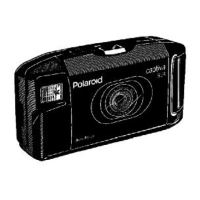
